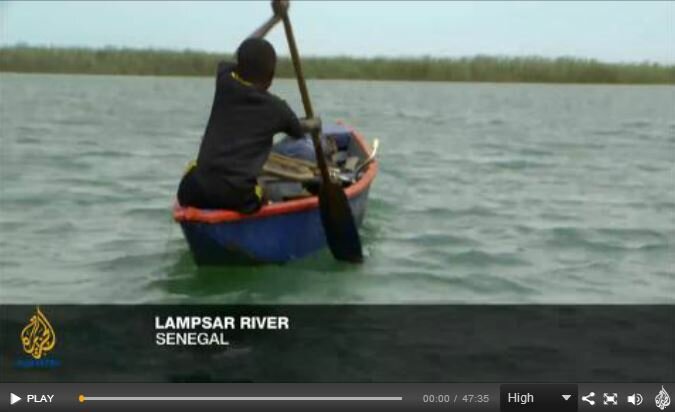In a fight between the world’s worst diseases and the human population, there are those that dream of a world free of diseases and poverty. Lifelines, a global health television series produced by Al Jazeera with support from the Bill & Melinda Gates Foundation, highlights the efforts of global health workers and professionals who are vigorously working to end neglected tropical diseases (NTDs).
Lifelines’ “River of Hope” documentary highlights the devastating effects of schistosomiasis on poor, rural communities in Senegal. The health crisis started when the Diama dam was built across the Senegal River in 1986. Construction of the dam stopped the river’s flow and created a growing population of infected snails, which left 90 percent of the population living near the river basin infected with schistosomiasis. Schisosomiasis is a water-borne parasite that affects 240 million people in mostly Sub-Saharan Africa and is linked to deadly chronic diseases such as cancer and organ failure.
Lifelines also covered the innovative work of Alassane Ndiaye and Elizabeth Huttinger who are working together on “Project Crevette,” a novel experiment to restore prawns — natural predators of the disease carrying snails — in the lower Senegal River basin to control the spread of schistosomiasis. They plan on convincing political leaders responsible for the Diama dam to build a fish ladder in the dam to allow prawns to maintain their migration upstream where the snails harboring schistosomiasis are heavily populated.
Lifelines also highlighted blinding trachoma and river blindness (onchocerciasis) in the “The End is in Sight” documentary. In Part One of “The End is in Sight,” Lifelines takes us into the Amhara province in Ethiopia, a region that has the highest prevalence of trachoma in the world. Trachoma is an infectious bacterial disease of the eye that blinds approximately half a million people annually. The documentary follows Aba Wolde, an 85-year old citizen of the Amhara region, and his daughter, Amalda. They both have advanced trachoma and must walk over 20 kilometers to a health clinic to receive surgical treatment.
Part Two of “The End is in Sight” takes place in the rural areas of Uganda with a high prevalence of river blindness. River blindness is transmitted by infected black flies and causes severe itching and visual impairment. In 1987, Merck declared that they would donate a medication called Mectizan to treat river blindness for as long as needed through the Mectizan Donation Program (MDP). In Uganda, where about 3.5 million people are infected with river blindness, Dr. Moses Katabarwa introduced an innovative administrative system of mobilizing, educating and providing communities in endemic areas with Mectizan. This approach of mass drug administration (MDA), along with environmental control measures for controlling fly larvae, has produced successful results for eliminating river blindness in multiple regions in Uganda.
Whether you’re an expert in the field of NTDs or someone who is curious to learn more about diseases that keep communities in poverty, we highly recommend that you watch these impactful stories from Aljazeera’s ‘Lifelines’ series.

